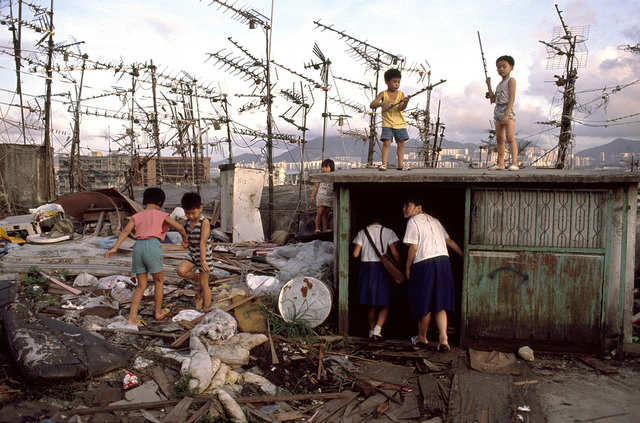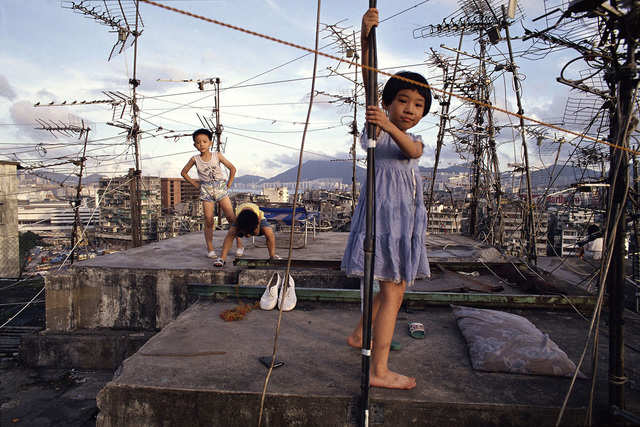Join us: facebook.com/unitedhumanists
A State-by-State List of the Lies Abortion Doctors Are Forced to Tell Women.
When she worked at an abortion clinic in South Dakota, Dr. Diane Horvath-Cosper was legally required to tell prospective patients that there was a chance that abortion would increase their risk of breast cancer and suicide.
Immediately afterwards, she’d tell them that neither of those statements had any actual basis in medical science. “What I would say was, ‘The state requires me to give you this information. We have excellent medical evidence to say that it’s actually not true, but I’m required to tell you this,'” she recalls.
Like 37 other states, South Dakota has an abortion-specific informed consent law in place that requires doctors to counsel patients before the procedure, using information chosen by legislators; in 28 states, women must then reflect for a certain amount of time—usually 24 hours, although some states mandate up to three days—before actually getting the abortion procedure. In 14 states, women must physically come to the abortion clinic for both the pre-abortion counseling session and the abortion procedure.
Twenty-eight states require abortion clinics to carry written informed consent brochures containing information about alternatives to abortion, the risks associated with abortion, and fetal development stages—all information selected, again, by legislators. In 11 states, the physician is legally obligated to give the brochure to her patients; in 17, she only needs to offer it to them.
Though lawmakers insist that such policies are meant to ensure that women are making informed and safe choices about their own bodies, the informed consent materials are often rife with medically inaccurate and misleading statements. Some states require doctors to mention a specious link between abortion and an increased risk of breast cancer, suicide, or future infertility. Some also contain blatantly ideological language, referring to embryos as “unborn children,” insisting that life begins at conception, and saying that abortion at any stage terminates the life of a separate, living being.
Critics of abortion-specific informed consent laws accuse politicians of intentionally manipulating the principle of informed consent—which is meant to promote patients’ safety and autonomy—in order to carry out their own ideological agendas. “The whole point of informed consent is to provide medically accurate information and then to work with the patient to come up with a treatment plan that’s agreeable to them,” says Dr. Horvath-Cosper, who now works as a reproductive health advocacy fellow at Physicians for Reproductive Health. “If we’re having to give people incorrect information and then saying, ‘Well, you know, the state requires me to say this. It’s not actually true,’ it undermines the patients’ confidence in us as providers.
“I think that certainly the doctor–patient relationship is based on trust—and how does a patient trust us if we’re giving them false information because we have to?” she asks.
How does a patient trust us if we’re giving them false information because we have to?
Informed consent is a foundational principle of health care; in the general sense, it’s defined as a formal agreement that a medical patient signs in order to give permission for a procedure after being told about the associated risks and benefits. Every state in America currently has a law in place that requires some level of informed consent, and any doctor who fails to obtain it is liable for negligence or battery.
“Typically when you’re going for a medical procedure—say you were having heart surgery—your doctor would inform you about the potential risks and benefits of having that surgery,” explains Cynthia Daniels, a political science professor at Rutgers who has studied informed consent laws extensively. “But in the case of abortion, of course, there have been a lot of questions about the level of accuracy provided to abortion patients—not just about the procedure, but about information that’s not just medical but clearly focused on trying to discourage women from having abortions.”
Dr. Horvath-Cosper also worked in a clinic in Minnesota, a state with both an informed consent requirement and a mandatory 24-hour waiting period. “I had to call each patient and read her a script that included all the information that the state wanted us to include about the risks of abortion, about the other options that are available to people,” she says. This extra requirement for abortions is superfluous; discussing risks and benefits is standard for all medical procedures.
“Of course we talk about all of these things with the patient, because that’s part of medical informed consent!” Dr. Horvath-Cosper says. “We obviously talk about the risks; we obviously talk about the potential benefits.”
In a 2012 paper on abortion and informed consent published in the Michigan Journal of Gender and Law, Ian Vandewalker, a lawyer at the Brennan Center for Justice at the New York University School of Law, argues that some of the potential abortion risks included in state-mandated informed consent materials are “exaggerated, misleading, or simply false.” These exaggerations and inaccurate statements, as he sees it, are intended to “discourage women from choosing to terminate their pregnancies.”
Broadly analyzed the written informed consent materials from 26 states. (Of the 28 states with laws requiring written informed consent materials, two have yet to produce them.) According to our findings, 13 states refer to the fetus as an “unborn child.” Eight states say that the fetus may be capable of feeling pain at or around 20 weeks. In two states, the informed consent materials say that life starts at conception, and three states say that getting an abortion is tantamount to ending a separate, unique life.
In seven states, the materials imply or reference a link between abortion and breast cancer; three imply a link between abortion and PTSD or “post-abortion” syndrome; four imply a link between abortion and possible infertility. Four mention suicidal thoughts or actions as a possible outcome of abortion.
The National Cancer Institute, the American Cancer Society, and the American College of Obstetricians and Gynecologist have all disputed the link between abortion and breast cancer. “Post-abortion syndrome” has been debunked; it has also never been recognized by the American Psychological Association (APA) or the American Psychiatric Association. In fact, the APA has found that “there is no credible evidence that a single elective abortion of an unwanted pregnancy in and of itself causes mental health problems for adult women,” noting most studies that claim otherwise “suffered from serious methodological problems.” The purported link between abortion and infertility has similarly been found baseless. Finally, most scientific literature finds that fetuses aren’t capable of feeling pain until at least 24 weeks.
In addition to the section on the potential risks of abortion, each state’s informed consent materials contain a section that includes visual depictions and written descriptions of fetal development, typically broken into two-week intervals. According to a 2013 analysis conducted by a team of four political scientists, who recruited seven specialists in embryological and fetal anatomy to analyze the informed consent materials, about one-third of the statements about fetal development are medically inaccurate—and only 42 percent can be characterized as “completely accurate.” In the state with the most inaccuracies, North Carolina, nearly half of the statements about fetal development were medically inaccurate; in the state with the fewest, Alaska, roughly 15 percent were inaccurate.
According to the analysis, the majority of the inaccuracies were meant to exaggerate “the ‘baby-like’ capacities of the embryo/fetus,” which suggests that the state is “presenting misinformation… in the interest of persuading women to choose birth over abortion.” This is, perhaps, unsurprising: Four states explicitly state in their informed consent materials that the state prefers live birth over abortion.
Not all informed consent materials are created equal; Professor Daniels, who authored the 2013 study surveying fetal development statements, mentions Alaska as an example of a state with “a good brochure.” She also tells me that a number of states have contacted her for help in removing inaccurate information from their own materials, which is heartening. However, as she sees it, the legislation is fundamentally flawed, and the fact that every single state her team surveyed had some sort of misinformation in its materials highlights this fact.
“The state should not be in a position where it is mandating what doctors tell their patients,” she says. “It’s fundamentally flawed legislation, because you can never separate that out from the politics of abortion, which means that your perspective is always going to be driven by something other than scientific evidence.”
Here’s a comprehensive list of the misinformation and/or biased or ideologically motivated statements contained in each state’s informed consent materials:
States that require doctors to give the materials to women:
Alabama
48-hour waiting period
“Did you know…”
- Refers to the fetus as an “unborn child” throughout: “The unborn child is called an embryo during the first 10 weeks of a pregnancy.”
- Lists “death” as a potential risk of abortion without specifying that dying from abortion-related consequences is extremely rare.
- 18.18 percent of fetal development statements were inaccurate, according to the analysis.
Idaho
24-hour waiting period
“What You Should Know About Abortion” and “Fetal Development”
-
- The very first text in the booklet states that the state of Idaho prefers live birth over abortion:
- Recommends “talking with a member of the clergy” before having an abortion.
- 20.36 percent of fetal development statements were inaccurate, according to the 2013 analysis.
Indiana
18-hour waiting period
“Abortion Informed Consent Brochure”
-
- States that life begins at conception: “Indiana statute states: Human physical life begins when a human ovum is fertilized by a human sperm.”
- States that Indiana prefers childbirth over abortion: “Indiana statute states: Childbirth is preferred, encouraged, and supported over abortion.”
- Implies that there’s a link between abortion and fertility issues:
- Indiana wasn’t included in the 2013 analysis of fetal development statements.
Kansas
24-hour waiting period
“If You Are Pregnant”
- Refers to the fetus as an “unborn child” throughout: “At 4 weeks, the unborn child is less than 1/100th of an inch long.”
- Explicitly states that “abortion terminates the life of a whole, separate, unique, living human being.”
- Implies that abortion can put women at an increased risk of breast cancer: “If you have carried a pregnancy to term as a young woman, you may be less likely to get breast cancer in the future. However, your risk is not reduced if your pregnancy is ended by an abortion. There are also studies that have found an increased risk of breast cancer after induced abortion, but other studies have found no risk.”
- Lists several grave potential “psychological risks” of abortion, including depression and PTSD without noting that some women have a neutral or positive response to the procedure.
- 43.40 percent of fetal development statements were inaccurate, according to the 2013 analysis.
Louisiana
24-hour waiting period
“Women’s Right to Know”
- Refers to the fetus as an “unborn child” several times: “By law, an ultrasound must be performed before any abortion to determine the gestational age of the unborn child.”
- Implies that a fetus can feel pain at 20 weeks: “By twenty weeks gestation, the unborn child has the physical structures necessary to experience pain. There is evidence that by twenty-weeks gestation unborn children seek to evade certain stimuli in a manner in which an infant or adult would avoid stimuli.”
- Says that women who carry a pregnancy to term are less likely to get breast cancer, so terminating a pregnancy would cause the patient to “lose the protective benefit” of giving birth.
- Says women may suffer from suicidal thoughts and behavior after abortion: “Some women may feel guilty, sad or empty, while others may feel relief that the procedure is over. Some women have reported serious psychological effects after their abortion, including depression, grief, anxiety, lowered self-esteem, regret, suicidal thoughts and behavior, sexual dysfunction, avoidance of emotional attachment, flashbacks and substance abuse.”
- 23.62 percent of fetal development statements were inaccurate, according to the 2013 analysis.
Michigan
24-hour waiting period
Informed consent website
- Lists several negative psychological risks associated with abortion without noting that some women have a neutral or positive response to the procedure: “While rare, some women may experience depression, feelings of guilt, anger, sleep disturbance, or loss of interest in work or sex, as a result of an abortion.”
- Links to a list of crisis pregnancy centers in the fetal development section, calling them “clinics offering pre-natal ultrasounds.” In reality, such organizations “are run by people who are anti-abortion,” and they “have a history of giving women wrong, biased information to scare them into not having abortions,” according to Planned Parenthood.
- 44.32 percent of fetal development statements were inaccurate, according to the 2013 analysis.
Missouri
72-hour waiting period
“Missouri’s Informed Consent Booklet”
On the first page, it states that life begins at conception in bold font
- Explicitly says that the state of Missouri encourages women to contact adoption agencies before considering abortion: “There are public and private agencies willing and able to help you carry your child to term, and to assist you and your child after your child is born, whether you choose to keep your child or place him or her for adoption. The state of Missouri encourages you to contact those agencies before making a final decision about abortion.”
- Implies the fetus is capable of feeling pain at 20 weeks (22 weeks gestational age): “At least by 22 weeks of gestational age, the fetus possesses all the anatomical structures, including pain receptors, spinal cord, nerve tracts, thalamus, and cortex, which are necessary to feel pain. There is evidence that at 22 weeks of gestational age, fetuses seek to evade certain stimuli in a manner that in an infant or adult would be interpreted as pain.”
- 25.66 percent of fetal development statements were inaccurate, according to the 2013 analysis.
Ohio
24-hour waiting period
“Fetal Development & Family Planning”
- 28.26 percent of fetal development statements were inaccurate, according to the 2013 analysis—and humanizing facts about the fetus are highlighted in the text.
South Dakota
72-hour waiting period
“Are You Pregnant? You Have Options”
- Mentions “post-abortion syndrome” as a potential psychological complication of abortion: “Some medical groups do not recognize post abortion syndrome as a clinical diagnosis, however, some studies suggest post abortion syndrome is a type of Post Traumatic Stress Disorder.”
- Says that the fetus may feel pain (in general—not even at 20 or 24 weeks): “Findings from some studies suggest that the unborn fetus may feel physical pain.”
- 23.62 percent of fetal development statements were inaccurate, according to the 2013 analysis.
Utah
72-hour waiting period
“Information About the Developing Embryo and Fetus, About Abortion, and About Abortion Alternatives”
- Refers to the fetus as an “unborn child” throughout: “Doctors call an unborn child either an ’embryo’ or a ‘fetus’ depending on the age.”
- Implies a link between abortion and potential future fertility issues: “Most women who have one abortion by vacuum aspiration experience few, if any problems getting pregnant later. However, women who have repeat abortions, or who have pre-existing bacteria or viruses such as chlamydia, are more likely to have problems in future pregnancies.”
- Lists “suicidal thoughts and behavior” and “a sense of loss and emptiness” as potential side effects of abortion, among a litany of other negative emotional responses—but says that one’s sense of relief might be fleeting: “Right after the abortion, some women report a sense of relief. This relief may be the short-term result of ending what was viewed as a problem. Possible negative emotional responses to having an abortion include: depression, grief, anxiety, lowered self-esteem, hostility toward self and others, regret, difficulty sleeping, suicidal thoughts and behavior, sexual dysfunction, relationship distruption [sic], flashbacks, and a sense of loss and emptiness.”
- Says it’s possible that the fetus can feel pain at 20 weeks: “Although scientific studies are not clear when an unborn child’s nervous system is developed enough to feel pain, there is some evidence that pain may be felt at or after 20 weeks of gestation.”
- Explicitly states that “the state of Utah prefers childbirth over abortion.”
- 23.19 percent of fetal development statements were inaccurate, according to the 2013 analysis.
Wisconsin
24-hour waiting period
“A Woman’s Right to Know…”
- Lists several possible complications of abortion, including sepsis, perforated uterus, and cut or torn cervix without ever noting how rare such complications are.
- States that fetuses can potentially feel pain at 20 weeks: “There is some evidence that by 20 weeks gestation the fetus avoids certain stimuli the same way in which an infant or adult would respond to pain.”
- 16.92 percent of fetal development statements were inaccurate, according to a later analysis performed by the group behind the 2013 study.
States that require doctors to offer the materials to women:
Alaska
No waiting period
Informed consent website
- 14.71 percent of fetal development statements were inaccurate, according to the 2013 analysis.
Arizona
24-hour waiting period
“A Woman’s Right to Know”
- Refers to the fetus as an “unborn child” from the moment of fertilization: “At fertilization (when the male sperm enters the female egg), the unborn child has his or her own unique set of DNA material.”
- Contains a section called “Future Childbearing and Infertility” which states that “some complications associated with an abortion, such as infection or a cut or torn cervix, may make it difficult or impossible to become pregnant in the future or to carry a pregnancy to term.”
- 28 percent of fetal development statements were inaccurate, according to the 2013 analysis.
Arkansas
48-hour waiting period
“A Woman’s Right to Know”
-
- The very first text in the booklet states that a fetus can feel pain at 20 weeks:
- Refers to the fetus as an “unborn child” frequently: “Practicing doctors measure an unborn child’s age from the first day of your last menstrual period which usually occurs two weeks before fertilization (conception).”
- 23.96 percent of fetal development statements were inaccurate, according to the 2013 analysis.
Georgia
24-hour waiting period
“Abortion: A Woman’s Right to Know”
- Refers to the fetus as an “unborn child” in the section about fetal pain.
- States that a fetus can feel pain at 20 weeks: “By 20 weeks gestation, the unborn child has the physical structures necessary to experience pain. There is evidence that by 20 weeks gestation unborn children will try to avoid certain stimuli in a manner which in an infant or an adult would be interpreted to be a response to pain.”
- 18.03 percent of fetal development statements were inaccurate, according to the 2013 analysis.
Kentucky
24-hour waiting period
“Available Resources for Pregnant Women” and “Information About Fetal Development” (not online)
- Crisis pregnancy centers are listed as a potential resource for pregnant women.
- 18.03 percent of fetal development statements were inaccurate, according to a later analysis performed by the group behind the 2013 study.
Minnesota
24-hour waiting period
“If You Are Pregnant: Information on Fetal Development, Abortion, and Alternatives”
-
- Refers to the fetus as an “unborn child” throughout: “The information provided in this booklet is designed to provide you with basic, medically accurate information on the fetal development of your unborn child in two-week intervals from implantation to birth.”
- Mentions a suggested link between abortion and breast cancer, only to say that the link has since been disproved.
- Suggests that a fetus may feel pain at 20 weeks: “Some experts have concluded the unborn child feels physical pain after 20 weeks gestation. Other experts have concluded pain is felt later in gestational development. This issue may need further study.”
- 20.45 percent of fetal development statements were inaccurate, according to the 2013 analysis.
Mississippi
24-hour waiting period
“Informed Consent Information and Resources” (not online)
- Refers to the fetus as an “unborn child” throughout: “Physicians most often refer to an unborn child’s age from the first day of the last menstrual period.”
- Implies potential link between abortion and breast cancer: “Medical professionals disagree about a possible connection between abortion and breast cancer risk. Some studies show that women who do not carry a pregnancy to term by choice or circumstance are more likely to develop breast cancer. Other studies have found no link between loss of pregnancy and breast cancer risk.”
- 22.06 percent of fetal development statements were inaccurate, according to a later analysis performed by the group behind the 2013 study.
Nebraska
24-hour waiting period
“If You Are Pregnant…”
- Lists negative psychological complications of abortion, including “sadness, grief, regret, anxiety and guilt” without specifying that some women have neutral or positive feelings after the procedure.
- Says that having more than one abortion may increase the risk for future complications, “such as premature delivery.”
- 23.76 percent of fetal development statements were inaccurate, according to the 2013 analysis.
North Carolina
72-hour waiting period
“A Woman’s Right to Know”
- 46.15 percent of fetal development statements were inaccurate, according to the 2013 analysis—the most of any state.
North Dakota
24-hour waiting period
“Information About Pregnancy and Abortion”
- Refers to the fetus as an “unborn child” throughout: “Fertilization age refers to how long the unborn child has been developing since the egg was fertilized, and is calculated from the estimated day of ovulation.”
- Explicitly states that North Dakota prefers live birth over abortion: “It is the policy of the state of North Dakota that childbirth is given preference, encouragement and support as it is in the best interests of the well-being and common good of North Dakota citizens.”
- Explicitly states that abortion is tantamount to terminating a separate life: “North Dakota Century Code (Law)… requires that a woman is told the [induced] abortion will terminate the life of a whole, separate, unique, living human being.”
- Urges women to contact adoption services before considering abortion: “The state of North Dakota strongly encourages you to contact one or more of these [adoption] agencies before making a final decision about abortion.”
- Mentions a link between abortion and breast cancer, only to say that the link has since been disproved: “Findings from some studies suggest there is no increased risk of breast cancer among women who had an induced abortion, while other studies suggest there is an increased risk; hence, differing professional opinions exist. Two professional organizations, the American Congress of Obstetricians and Gynecologists and the National Cancer Institute, have reviewed the various studies and have released statements concluding no relationship between induced abortion and an increase in breast cancer risk.”
- 23.62 percent of fetal development statements were inaccurate, according to the 2013 analysis.
Oklahoma
72-hour waiting period
“A Woman’s Right to Know”
- Refers to the fetus as an “unborn child” throughout and explicitly defines “unborn child” as “the unborn offspring of human beings from the moment of conception, through pregnancy, and until live birth including the human conceptus, zygote, morula, blastocyst, embryo, and fetus.”
- Explicitly states that abortion terminates a separate life: “In Oklahoma, the legal definition of an abortion is ‘the purposeful termination of a human pregnancy’ … ‘abortion shall terminate the life of a whole, separate, unique, living human being.'”
- Lists “death” as a “rare complication” of surgical abortion without specifying how rare abortion-related fatalities are.
- Mentions a potential link between breast cancer and abortion: “Some studies indicate that there is no increased risk of breast cancer after a woman has had an abortion. Other studies indicate that there might be an increased risk.”
- 32.82 percent of fetal development statements were inaccurate, according to the 2013 analysis—and humanizing facts about the fetus are highlighted in the text.
Pennsylvania
24-hour waiting period
“Abortion: Making a Decision”
- Refers to the fetus as an “unborn baby” and “developing baby” throughout: “This booklet has pictures and explains the stages of pregnancy. It does this by showing pictures of the unborn baby every two weeks.”
- Recommends that any woman who wants an abortion speak to a counselor through the state’s Alternative to Abortion Services Program; on the Department of Health Website, the page with this title simply links to Real Alternatives, which Rewire has described as ” Pennsylvania-based anti-choice crisis pregnancy center network.”
- 23.96 percent of fetal development statements were inaccurate, according to the 2013 analysis.
Texas
24-hour waiting period
“A Woman’s Right to Know”
- Refers to the fetus as an “unborn child” from the moment of fertilization: “During the first 8 weeks, the unborn child is known as an embryo. After that time the unborn child is known as a fetus.”
- Lists PTSD and suicidal thoughts as potential psychological effects of an abortion: “Some women have reported serious psychological effects after their abortion, including depression, grief, anxiety, lowered self-esteem, regret, suicidal thoughts and behavior, sexual dysfunction, avoidance of emotional attachment, flashbacks, and substance abuse. These emotions may appear immediately after an abortion, or gradually over a longer period of time.”
- Has an entire section called “Future Childbearing and Infertility” in which it’s implied that abortion may make it difficult or impossible to become pregnant in the future.
- Strongly implies that there’s a link between abortion and breast cancer: “Your chances of getting breast cancer are affected by your pregnancy history. If you have carried a pregnancy to term as a young woman, you may be less likely to get breast cancer in the future. However, you do not get the same protective effect if your pregnancy is ended by an abortion. The risk may be higher if your first pregnancy is aborted. While there are studies that have found an increased risk of developing breast cancer after an induced abortion, some studies have found no overall risk. There is agreement that this issue needs further study.”
- 34.45 percent of fetal development statements were inaccurate, according to the 2013 analysis.
Virginia
24-hour waiting period
“Abortion: Making an Informed Decision”
- 22.29 percent of fetal development statements were inaccurate, according to the 2013 analysis.
West Virginia
24-hour waiting period
“Fetal Development, Abortion, and Adoption”
-
- Lists several “possible detrimental psychological effects of abortion,” including “suicidal thoughts or acts” without ever stating that some women can feel neutrally or positively about the experience.
- 17.59 percent of fetal development statements were inaccurate, according to the 2013 analysis.
Source: https://bit.ly/2HT2mfq



















